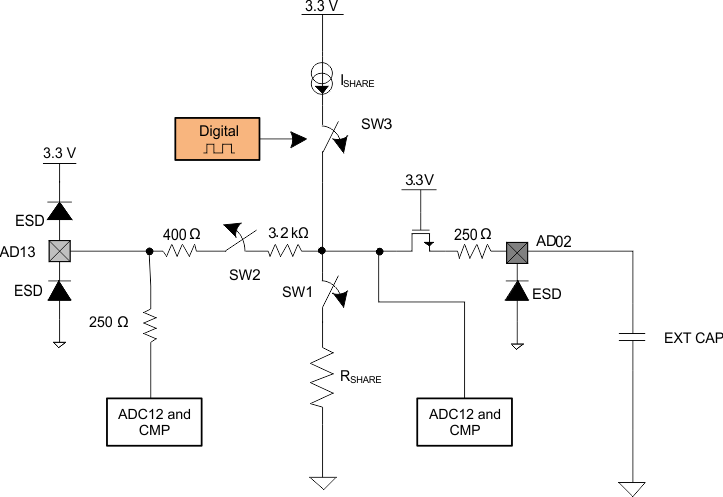SLUSAP2J March 2012 – November 2021 UCD3138
PRODUCTION DATA
- 1 Features
- 2 Applications
- 3 Description
- 4 Functional Block Diagram
- 5 Revision History
- 6 Device Comparison Table
- 7 Pin Configuration and Functions
- 8 Specifications
-
9 Detailed Description
- 9.1 Overview
- 9.2 ARM Processor
- 9.3 Memory
- 9.4 System Module
- 9.5
Feature Description
- 9.5.1 Sync FET Ramp and IDE Calculation
- 9.5.2 Automatic Mode Switching
- 9.5.3 DPWMC, Edge Generation, IntraMux
- 9.5.4 Filter
- 9.5.5 Communication Ports
- 9.5.6 Miscellaneous Analog
- 9.5.7 Package ID Information
- 9.5.8 Brownout
- 9.5.9 Global I/O
- 9.5.10 Temperature Sensor Control
- 9.5.11 I/O Mux Control
- 9.5.12 Current Sharing Control
- 9.5.13 Temperature Reference
- 9.6 Device Functional Modes
-
10Application and Implementation
- 10.1 Application Information
- 10.2
Typical Application
- 10.2.1 Design Requirements
- 10.2.2 Detailed Design Procedure
- 10.2.3 Application Curves
- 11Power Supply Recommendations
- 12Layout
- 13Device and Documentation Support
- 14Mechanical Packaging and Orderable Information
Package Options
Mechanical Data (Package|Pins)
Thermal pad, mechanical data (Package|Pins)
Orderable Information
9.5.12 Current Sharing Control
UCD3138 provides three separate modes of current sharing operation.
- Analog bus current sharing
- PWM bus current sharing
- Master/Slave current sharing
- AD02 has a special ESD protection mechanism that prevents the pin from pulling down the current-share bus if power is missing from the UCD3138
The simplified current sharing circuitry is shown in the drawing below:
 Figure 9-16 Simplified Current Sharing Circuitry
Figure 9-16 Simplified Current Sharing Circuitry| CURRENT SHARING MODE | FOR TEST ONLY, ALWAYS KEEP 00 | CS_MODE | EN_SW1 | EN_SW2 | DPWM |
|---|---|---|---|---|---|
| Off or Slave Mode (3-state) | 00 | 00 (default) | 0 | 0 | 0 |
| PWM Bus | 00 | 01 | 1 | 0 | ACTIVE |
| Off or Slave Mode (3-state) | 00 | 10 | 0 | 0 | 0 |
| Analog Bus or Master | 00 | 11 | 0 | 1 | 0 |
The period and the duty of 8-bit PWM current source and the state of the SW1 and SW2 switches can be controlled through the current sharing control register (CSCTRL).